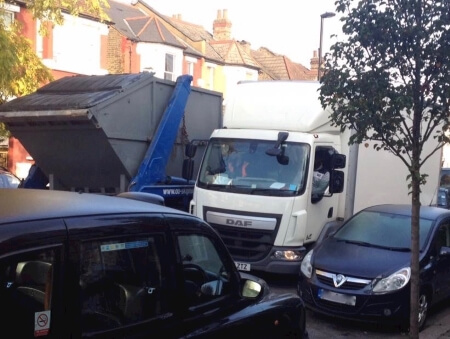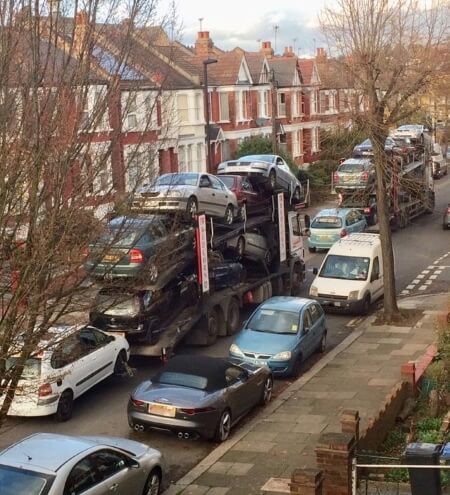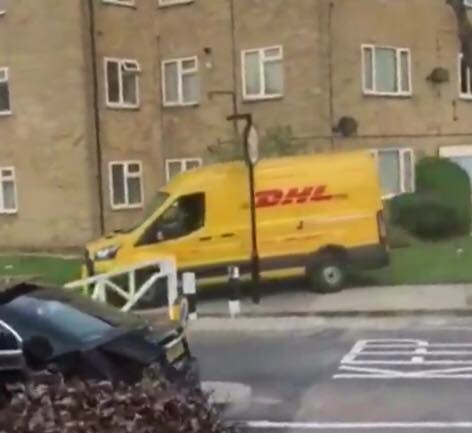A new traffic filter, which local activists see as the first step in a wider effort to implement a Low Traffic Neighbourhood, has had a bumpier ride than envisaged
For many people in N11 and N13, Warwick Road traffic is notorious. At rush hour/s, which starts as early as three in the afternoon and lasts until at least 7pm, queues of idling traffic can stretch the length of the road. When there aren’t long queues, rat-runners tend to take advantage of the gaps and race above the 20mph speed limit, often making it too dangerous for pedestrians to cross.
 One of the biggest threats to local health and safety in recent years, however, has been the intrusion of commercial vans and lorries, the latter in flagrant violation of the 7.5t weight limit (‘except access’). Residents have reported everything from cement mixers to car transporters, often (as a quick web-search will prove) in direct correlation to traffic congestion on the A406. Some are serial offenders, such as a number of local skip lorries that use the street daily, while that bête noir of all rat-run residents, SatNav, is to blame for other large vehicles ending up on a street far narrower and more congested than their traffic app indicated.
One of the biggest threats to local health and safety in recent years, however, has been the intrusion of commercial vans and lorries, the latter in flagrant violation of the 7.5t weight limit (‘except access’). Residents have reported everything from cement mixers to car transporters, often (as a quick web-search will prove) in direct correlation to traffic congestion on the A406. Some are serial offenders, such as a number of local skip lorries that use the street daily, while that bête noir of all rat-run residents, SatNav, is to blame for other large vehicles ending up on a street far narrower and more congested than their traffic app indicated.
 In September 2017, at a Bowes ward forum, LBE Traffic and Transportation Head David Taylor presented plans for a width restriction to address the problem of lorries and HGVs on the street. Eighteen long months later, after a full legal consultation process and negotiations with Haringey and TfL to install appropriate signage, the width restriction was unveiled on Thursday 18th April.
In September 2017, at a Bowes ward forum, LBE Traffic and Transportation Head David Taylor presented plans for a width restriction to address the problem of lorries and HGVs on the street. Eighteen long months later, after a full legal consultation process and negotiations with Haringey and TfL to install appropriate signage, the width restriction was unveiled on Thursday 18th April.
If only that were the end of the story. To start with, it was an unexpectedly tight squeeze for some. Warning signs on both the Bounds Green Road and A406 ends of Warwick Road made clear that the allowance was 1.9m, but it soon became evident that a number of drivers do not know the width of their cars – or, more depressingly, that many will ignore signs and restrictions anyway, if you give them half a chance. In the scenes that followed, one incontrovertible truth emerged: that most drivers, used to going between 20 and 30mph on a clear section of road, do not like slowing down.
 As a Twitter wag once put it, a rat-runner will drive over his own child’s toes if it shaves five minutes off his journey time. With this in mind, jaded local observers (who, after all, once witnessed drivers cutting across the green by Tewkesbury Terrace on a footpath) should not have been surprised at what ensued. Nor should the local council, who might have foreseen the disruption and imposed some other traffic-controlling measures to help the new design bed in. But on Tuesday 23rd, the busy first day back after a bank holiday weekend, the easily anticipated traffic disruption took a nasty turn. Large vans began mounting the pavement to avoid the restriction, and other impatient drivers, furious at the imposition of a speed control, leaned on their horns or executed reckless 3-point turns wherever they could in order to race off elsewhere, in search of a better cut-through.
As a Twitter wag once put it, a rat-runner will drive over his own child’s toes if it shaves five minutes off his journey time. With this in mind, jaded local observers (who, after all, once witnessed drivers cutting across the green by Tewkesbury Terrace on a footpath) should not have been surprised at what ensued. Nor should the local council, who might have foreseen the disruption and imposed some other traffic-controlling measures to help the new design bed in. But on Tuesday 23rd, the busy first day back after a bank holiday weekend, the easily anticipated traffic disruption took a nasty turn. Large vans began mounting the pavement to avoid the restriction, and other impatient drivers, furious at the imposition of a speed control, leaned on their horns or executed reckless 3-point turns wherever they could in order to race off elsewhere, in search of a better cut-through.
When Enfield Council suspended the width restriction later the same day, opening up the emergency access gate for all traffic, local residents assumed the worst. Had the council, after a trial of just one working day, given in to the complaints of rat-runners who, unable or unwilling to slow down enough to clear a restriction, had apparently scratched their cars?
Thankfully, no. As an Enfield traffic officer confirmed in a widely circulated email two days later (25th April), there had been a contractor misunderstanding and engineers realised they needed to add 15cm (4”) to meet the approved spec. No precise timeframe for re-implementation was officially confirmed, but most involved expressed hope it would be sooner rather than later.
Perhaps even more important than a timely return of the width restriction, however, is a more thorough preparation by Enfield Council for the second bedding-in phase, so that disruption is minimal for those living closest to the filter. A measure that disrupts well-established rat-running habits, and has not yet registered on SatNav, is going to take some time to stabilise. Bollards on the adjacent pavement and more prominent signage would certainly help make this a smoother adjustment to the quieter streets the neighbourhood has long been waiting for.
As for the longer term, local campaigners are pushing for a wider, whole-area solution to the chronic traffic problems in the region, and insist that the width restriction is just the first step in the progress towards a Low Traffic Neighbourhood for Bowes. Only time will tell.